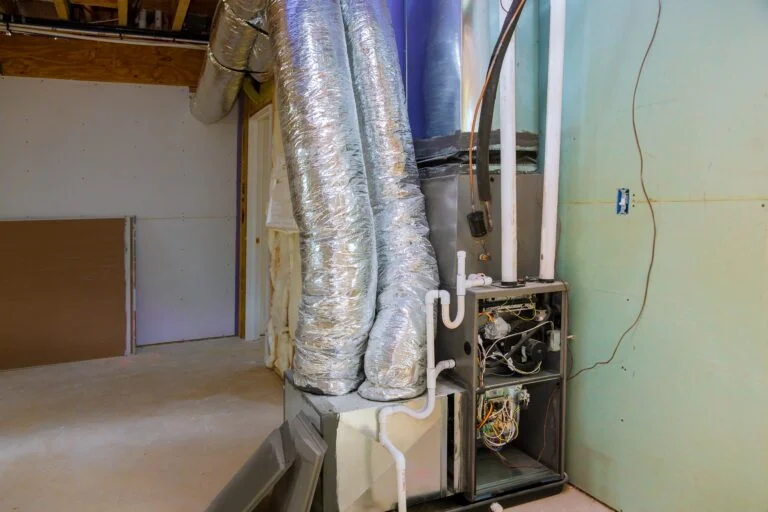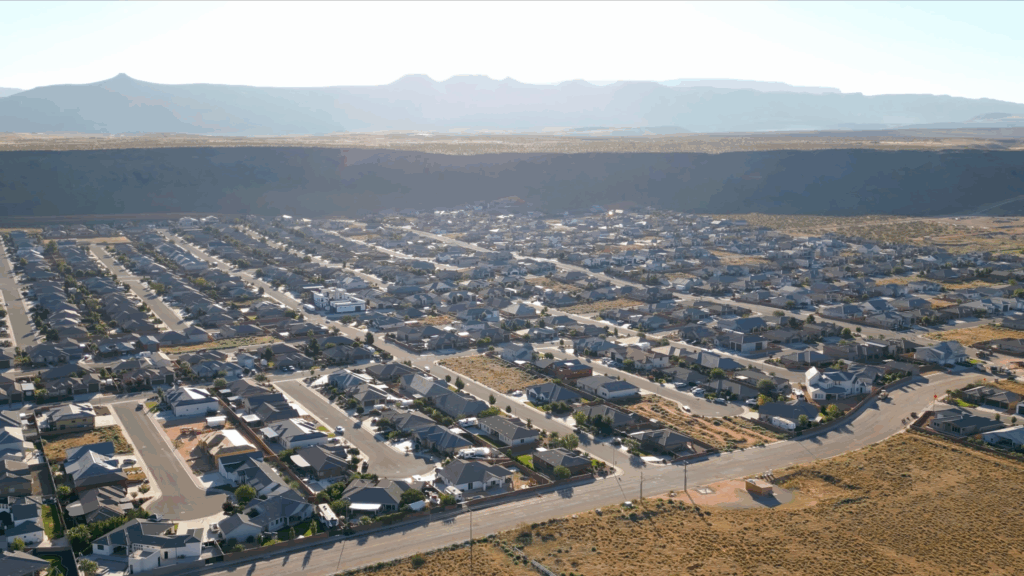Do I Need a Furnace for my Hurricane, UT Home?

When people think about the climate in Hurricane and throughout Southern Utah, their minds immediately go to the intense, dry heat of our summers. Our reputation for scorching temperatures is well-deserved, and a powerful air conditioner is a non-negotiable part of life in the desert. Because our summers are so famous, many homeowners, especially those who have recently moved to the area, are often surprised by the reality of our winters. It is a common misconception that our region is warm year-round, which can lead to a dangerous lack of preparation for the heating season.
The truth is that while our winters are not as severe as those in northern states, it certainly gets cold. This raises a critical question for any homeowner who is considering a new heating system: with our unique climate, is a powerful, traditional furnace necessary, or are there other, more efficient options available? The answer is a nuanced one that depends on your specific home, your access to utilities, and your personal comfort priorities. At Heatwave Solutions, we believe in providing our neighbors with clear, fact-based information to help them make the best possible choice. This guide will provide a detailed look at the heating needs of a Hurricane, UT home and compare the two primary heating solutions available: the gas furnace and the electric heat pump.
The Reality of Winter in Southern Utah
Before you can choose the right heating system, it is important to have a realistic understanding of what a winter in our high-desert climate actually entails. While our daytime temperatures can often be mild and pleasant, our clear skies and low humidity mean that as soon as the sun goes down, the temperature can plummet dramatically. From November through March, it is very common for our nighttime and early morning temperatures to drop well below freezing.
Our region also experiences periodic cold snaps, where daytime highs may struggle to get out of the 30s and overnight lows can dip into the teens. While major snow events are not an everyday occurrence, they are certainly a part of our winter landscape. This means that a reliable, powerful, and effective source of heat is not a luxury; it is an absolute necessity for keeping your home safe and comfortable during a significant portion of the year.

This is about more than just staying warm. A home that is not adequately heated during a prolonged cold spell is at a high risk of developing frozen and burst plumbing pipes. This type of event can cause catastrophic and incredibly expensive water damage to your home’s structure, drywall, and personal belongings. Therefore, the heating system you choose must be fully capable of protecting your home and your family through the coldest nights of our winter.
The Traditional Powerhouse: The Gas Furnace
The gas furnace is the most common and widely trusted heating system for homes in our area that have access to a natural gas line. Its operation is straightforward and incredibly effective at producing a high level of heat. When your thermostat calls for warmth, a valve opens, and natural gas is delivered to a series of burners inside a sealed combustion chamber. The flames heat a critical component called a heat exchanger. Your home’s indoor blower motor then pushes air across the super-heated exterior of this heat exchanger, and the newly warmed air is distributed throughout your home via your ductwork.
The primary and most celebrated advantage of a gas furnace is its ability to produce an intense and consistent level of heat, regardless of the outdoor temperature. The air coming from your vents will be significantly warmer than the air produced by other types of systems, providing a robust and comforting warmth that is extremely reliable during the absolute coldest days and nights of our Idaho Falls winter.
Another significant advantage of a gas furnace is its operating cost. In most regions with access to natural gas, it has historically been a more affordable heating fuel than electricity. This often means that, during the peak heating season, the monthly utility bills for a home with a high-efficiency gas furnace will be lower than those for a home relying on electric heat. It is a dedicated heating appliance, which means it must be paired with a separate central air conditioner for summer cooling. As a combustion appliance, it also absolutely requires an annual professional safety inspection.
The All-in-One Innovator: The Electric Heat Pump
An electric heat pump is a sophisticated and highly efficient all-in-one system that provides both heating and cooling for your home. It is important to understand that a heat pump does not create heat by burning fuel; it works by intelligently moving heat from one place to another. During the summer, it functions exactly like a standard air conditioner, absorbing heat from inside your home and releasing it outside. In the winter, it reverses this process with incredible efficiency. Even on a cold day, there is still ambient heat present in the outdoor air, and a heat pump can absorb this heat, concentrate it, and transfer it inside to warm your home.
The greatest advantage of a heat pump is its remarkable energy efficiency, especially in milder temperatures. Because it is moving heat rather than generating it from scratch, a modern heat pump can be up to three or four times more efficient than a traditional electric furnace. This can lead to significant energy savings, particularly during the transitional spring and fall shoulder seasons when heating is still needed but the temperatures are not extreme. Another major benefit is the convenience of having a single piece of equipment that handles all of your year-round comfort needs.
The primary consideration for a heat pump in a cold climate like ours in Idaho Falls is its performance in sub-freezing temperatures. As the outdoor temperature drops significantly, typically below 25 to 30 degrees, the heat pump’s ability to efficiently extract heat from the air diminishes. For this reason, heat pumps installed in our region must always be paired with a supplementary heat source, often called auxiliary or emergency heat. This backup system, which is typically a set of electric resistance coils integrated into the indoor unit, will automatically turn on to assist the heat pump and ensure your home stays warm during the coldest parts of winter.
Key Considerations for Your Hurricane Home
The decision between a gas furnace and an electric heat pump for your Hurricane home is a choice between two excellent technologies. The right answer for you depends on several key factors, the most important of which is your home’s access to utilities. If your home is not connected to a natural gas line, a modern, high-efficiency electric heat pump is almost always the best and most logical choice for your year-round comfort and efficiency.

If you do have access to natural gas, the decision becomes a matter of your personal priorities. If your primary goal is to have the most powerful and consistent heating performance during the absolute coldest nights of winter, a high-efficiency gas furnace is an unbeatable option. If your goal is to maximize your energy efficiency across the entire year, a heat pump may be the better choice. While a gas furnace is cheaper to run during the deep cold, the heat pump’s incredible efficiency during the many milder heating days, combined with its function as your high-efficiency air conditioner in the summer, can make its total year-round energy cost very competitive.
For homeowners who want the absolute best of both worlds, a high-performance dual fuel system is an excellent option. This system pairs an electric heat pump with a gas furnace. The ultra-efficient heat pump provides all your heating during the milder weather, and the powerful gas furnace automatically takes over when the temperature drops to a certain point, ensuring you are always using the most efficient and effective heating source for any given condition.
A Tailored Recommendation
As you can see, the “best” heating system is not a one-size-fits-all answer. It is a decision that depends on your home’s specific infrastructure, your budget, your long-term energy saving goals, and your personal comfort preferences. This is why a professional consultation with an experienced and trustworthy HVAC contractor is so essential.
At Heatwave Solutions, we see our role as more than just installers; we are your expert home comfort consultants. Our process begins with a thorough and no-obligation assessment of your home. We will listen to your needs, analyze your utility access, and perform a detailed load calculation to ensure that any system we recommend is perfectly sized for your property. We are committed to providing our neighbors in the Hurricane area with honest, data-driven recommendations, whether that is a high-efficiency furnace, a modern heat pump, or a high-performance dual fuel system. Our goal is to provide you with the information you need to make a confident choice, all backed by a professional, code-compliant installation.
So, do you need a furnace for your Hurricane, UT home? The answer depends on your priorities and your fuel source, but you absolutely need a powerful and reliable heating system to navigate our cold desert winters safely and comfortably. Both a modern, high-efficiency gas furnace and a state-of-the-art electric heat pump are excellent solutions that can provide years of dependable warmth. The right choice is the one that best aligns with your home’s unique characteristics and your family’s needs.
Making this important decision requires expert guidance. We encourage all homeowners in the Hurricane and greater Southern Utah area who are considering a new heating system to contact the trusted local experts at Heatwave Solutions. Let us provide you with a professional consultation to explore all of your options and find the perfect heating solution for your home before the cold weather arrives.

